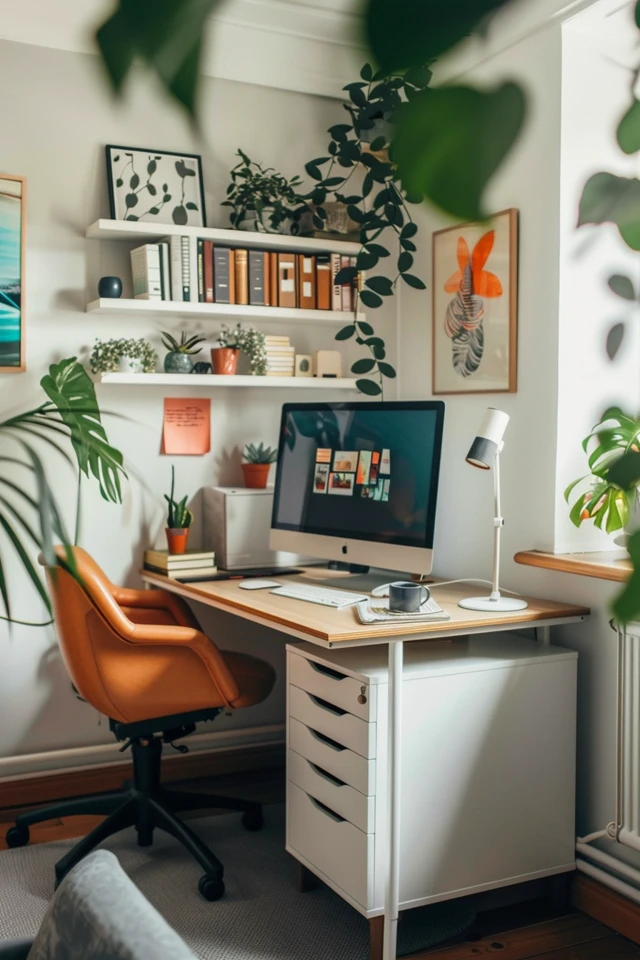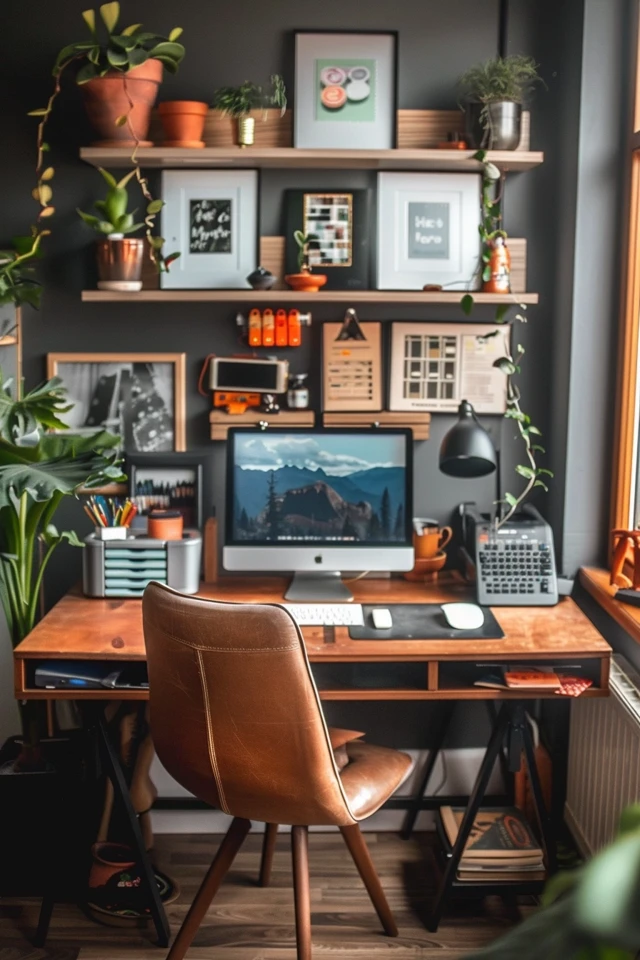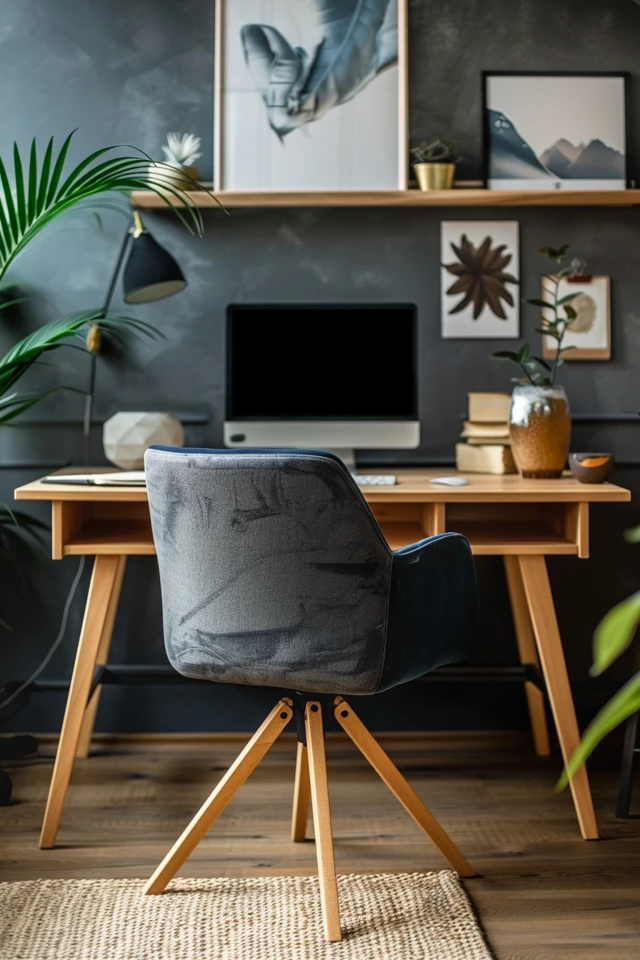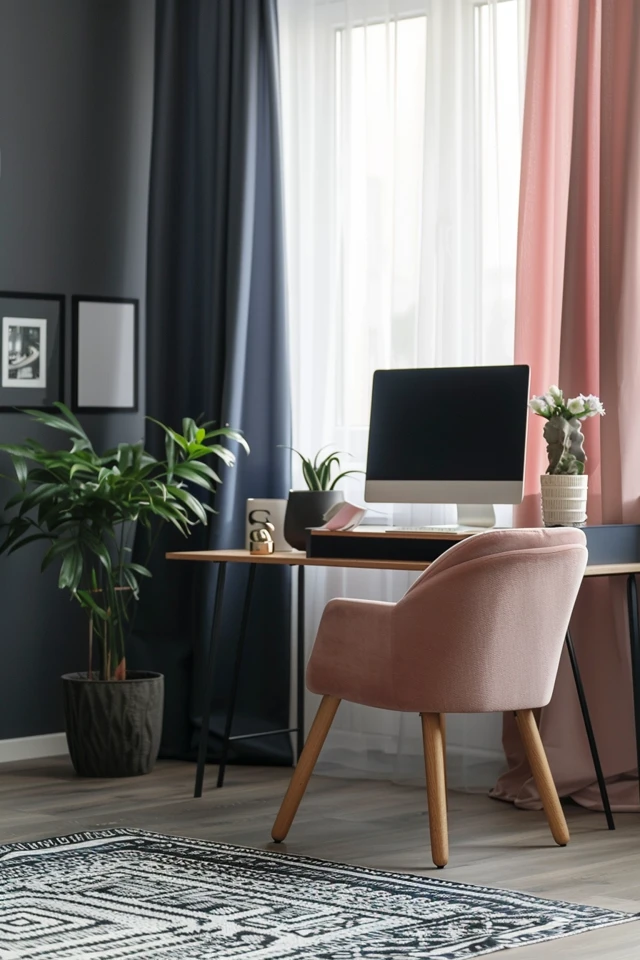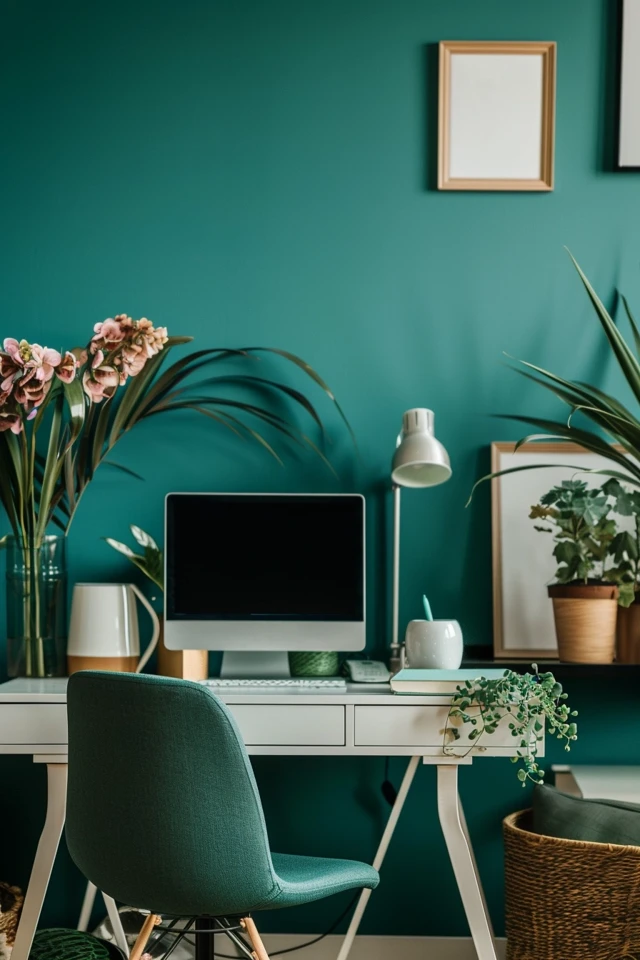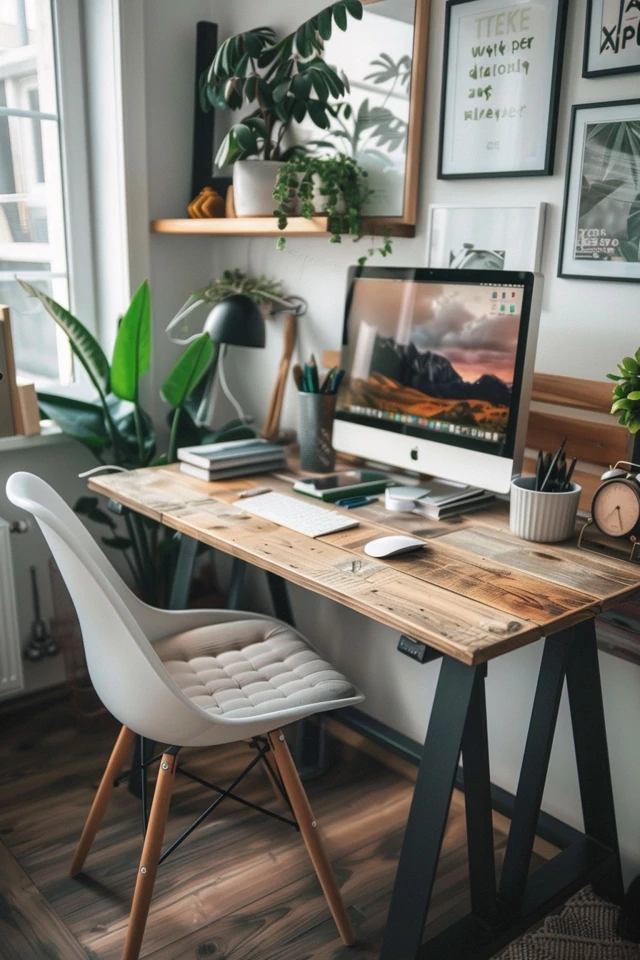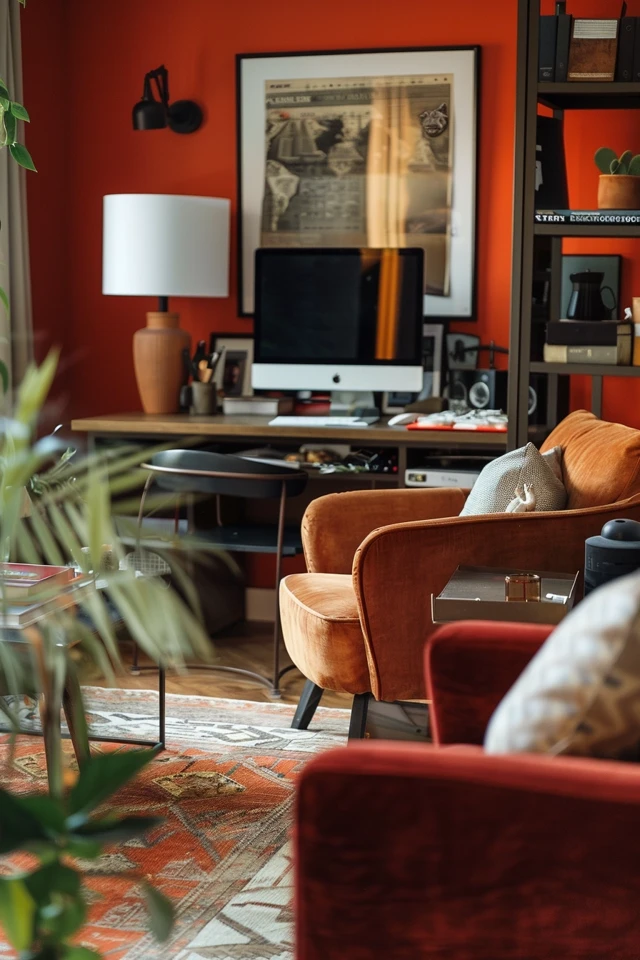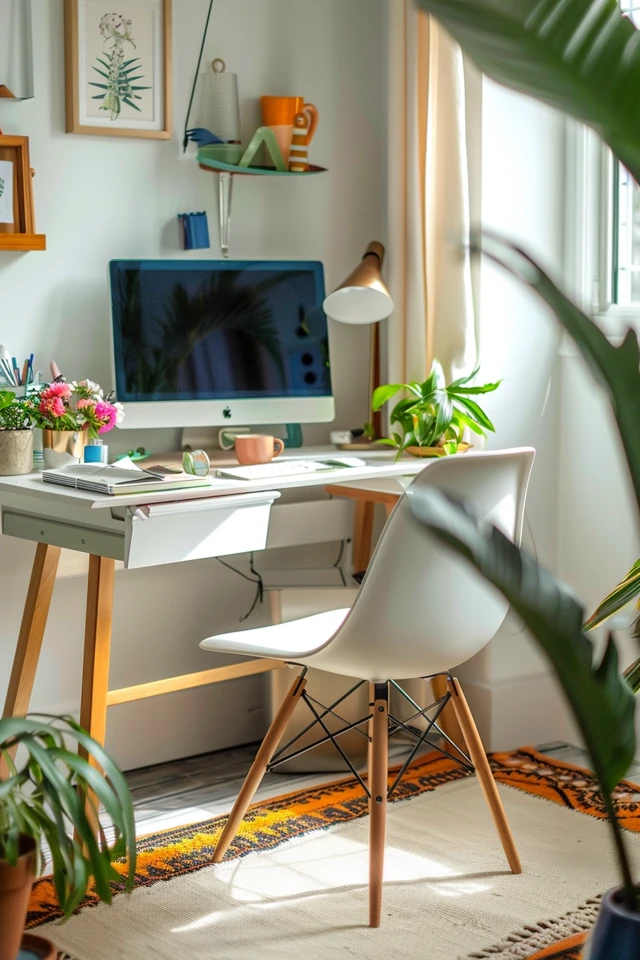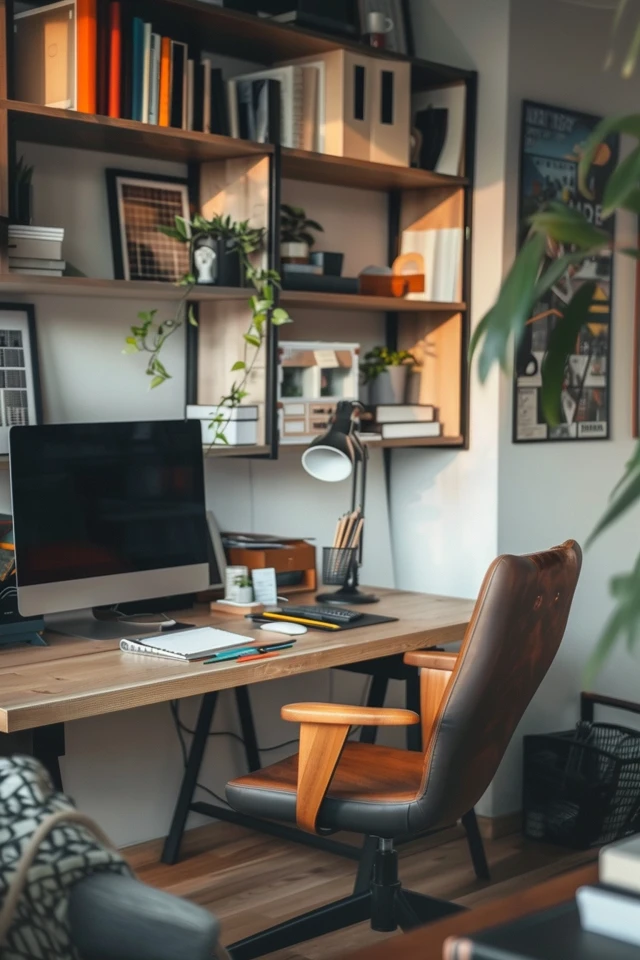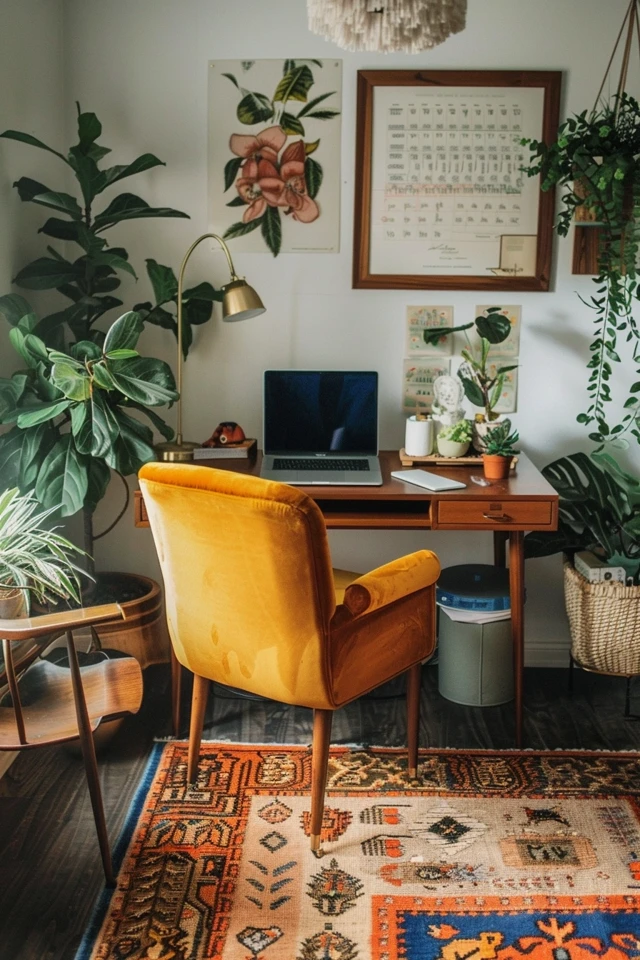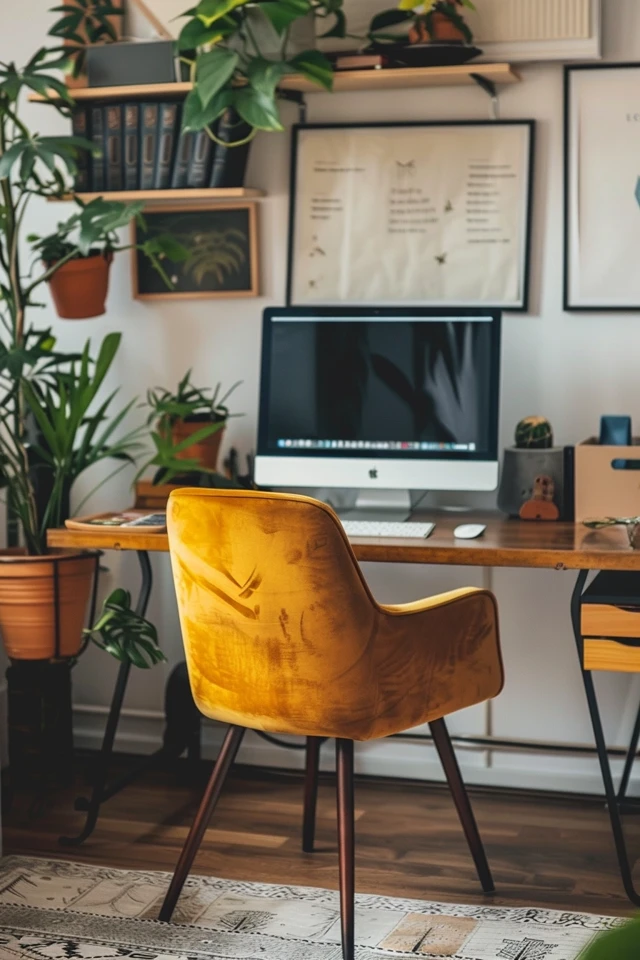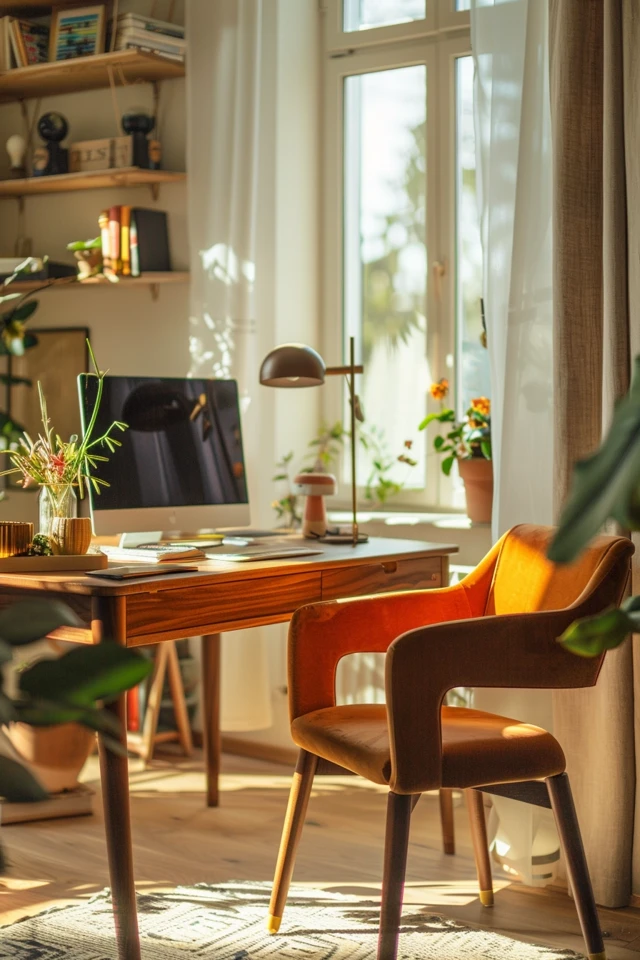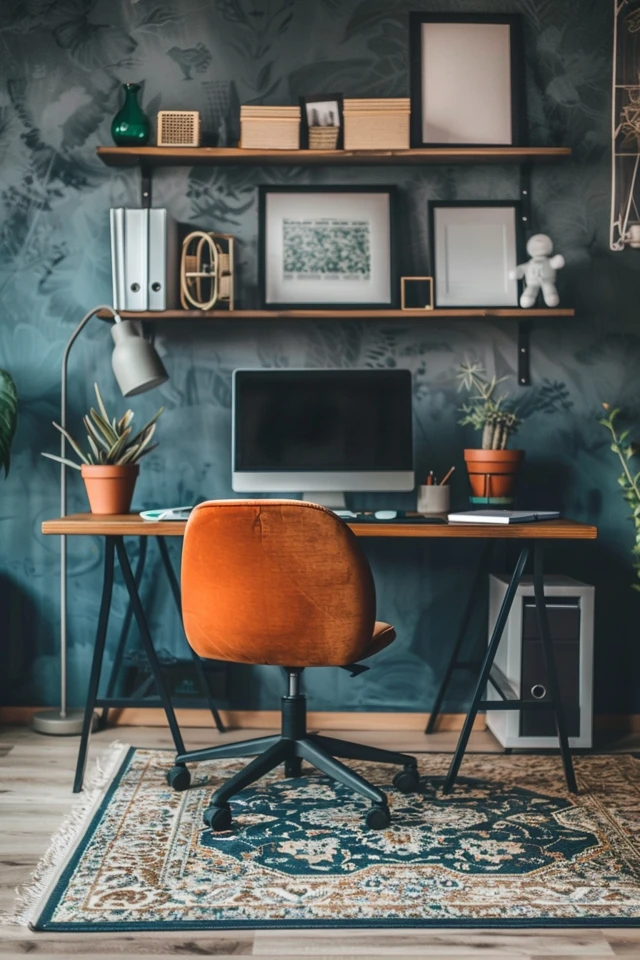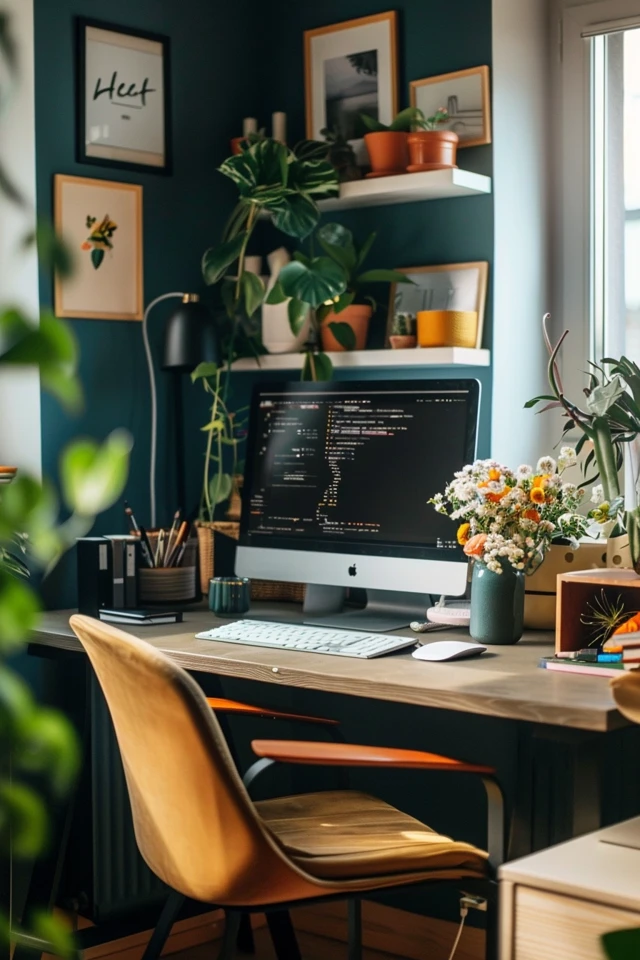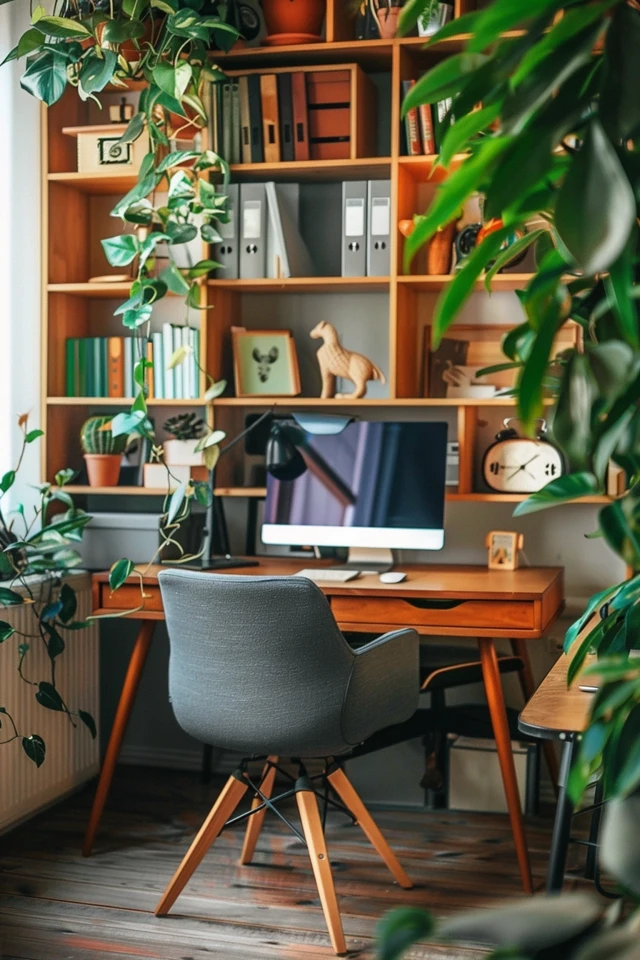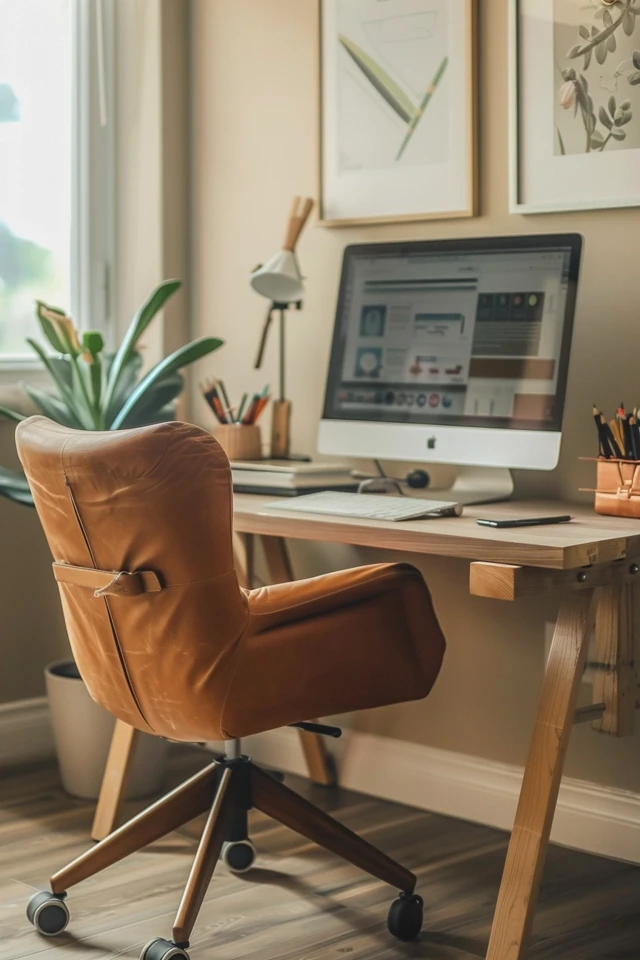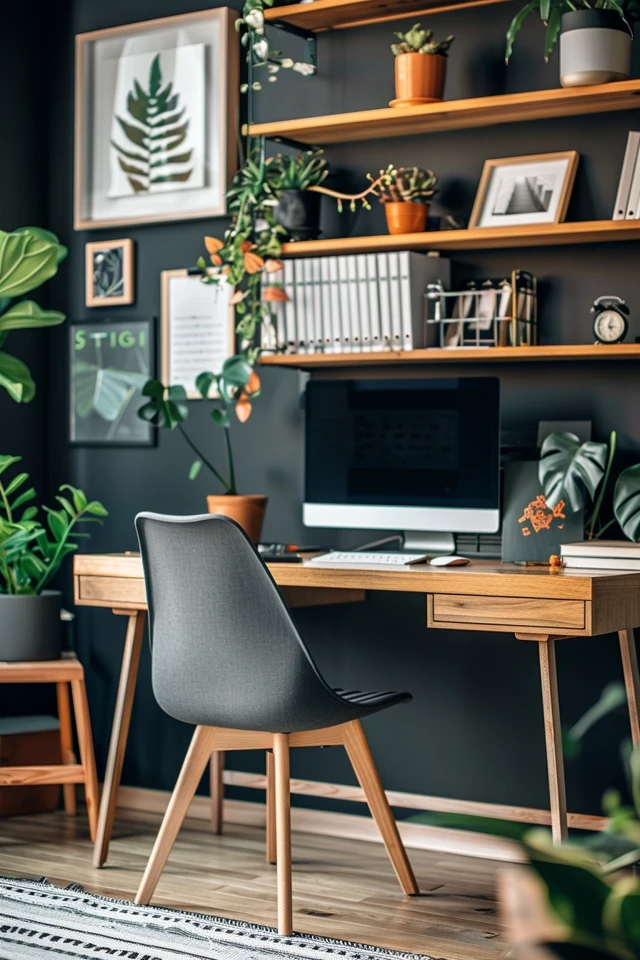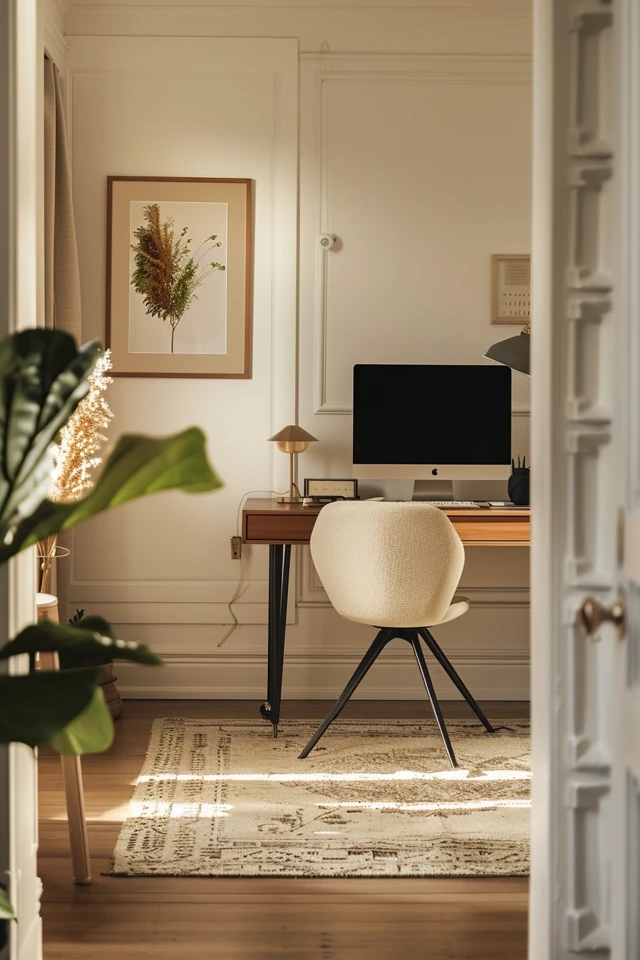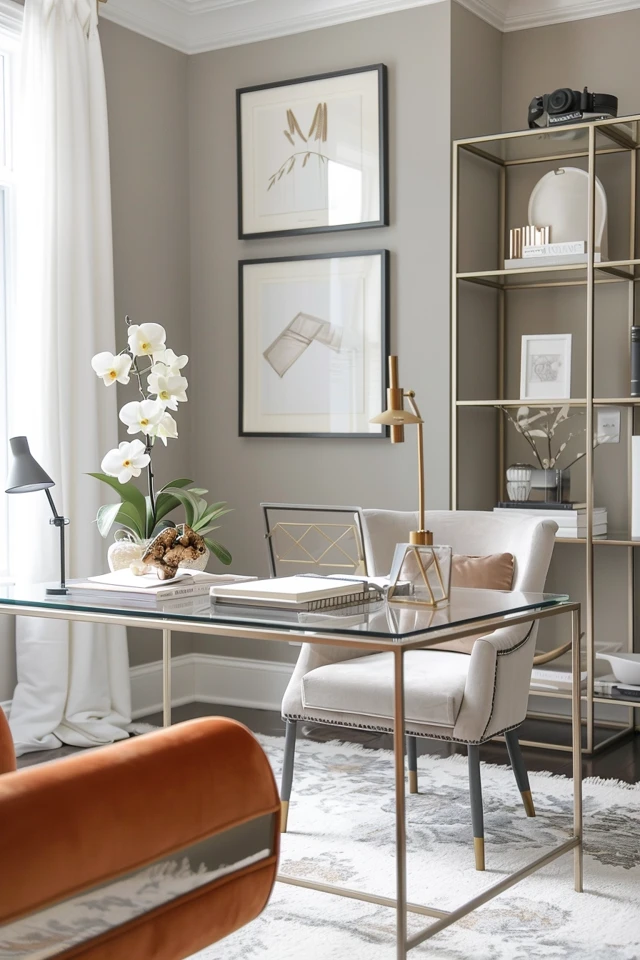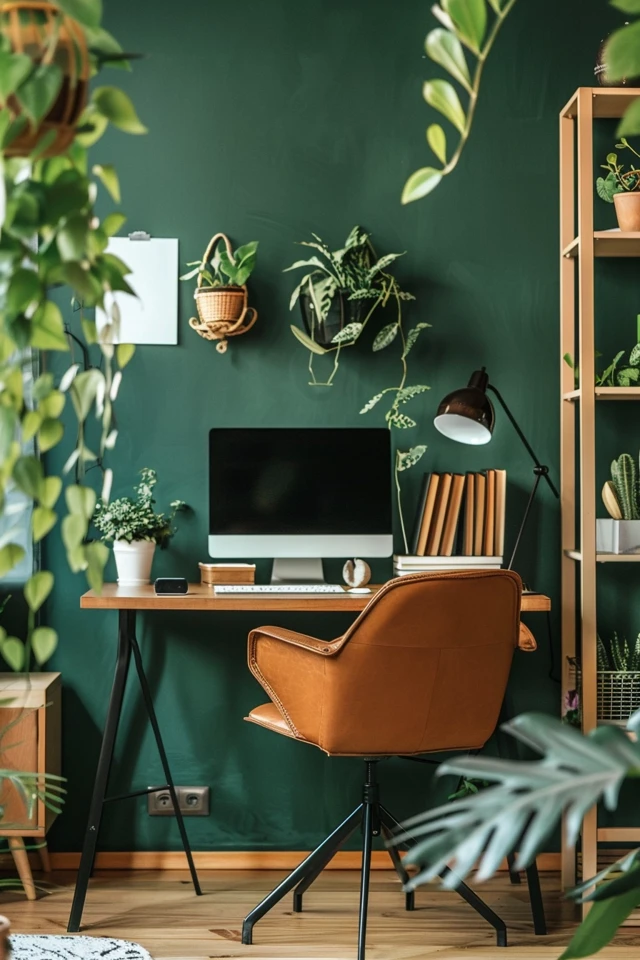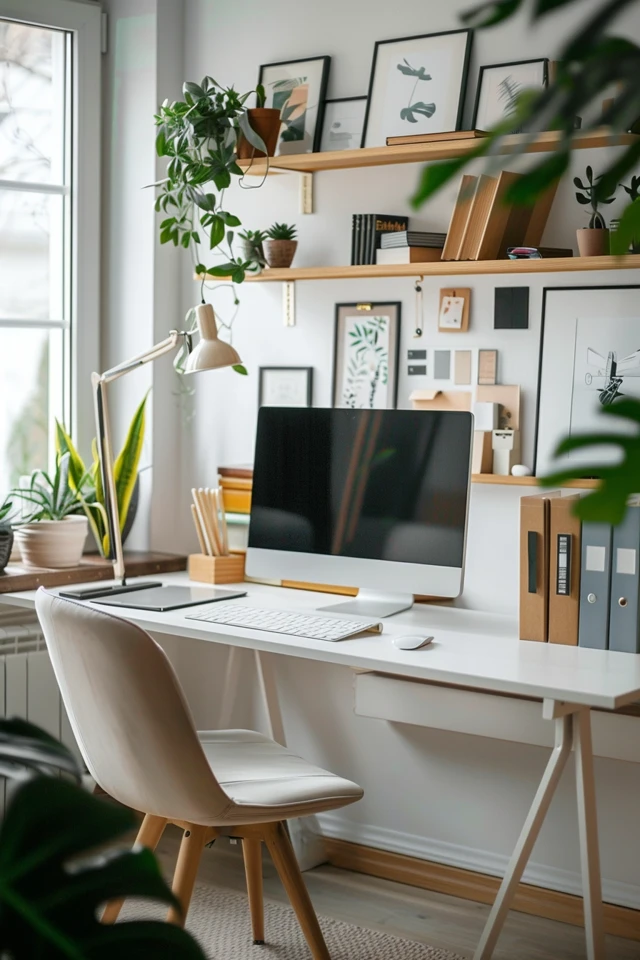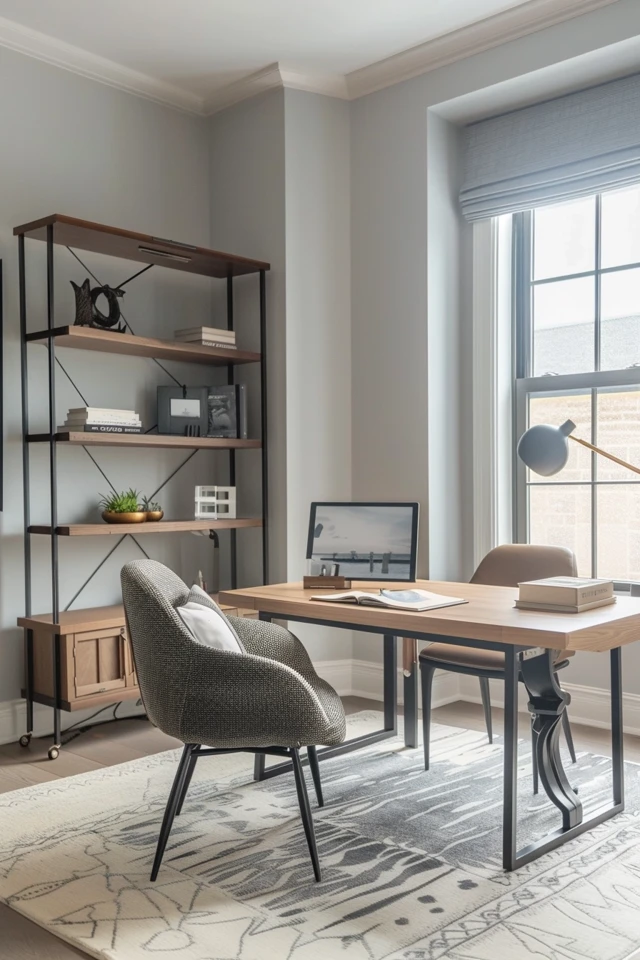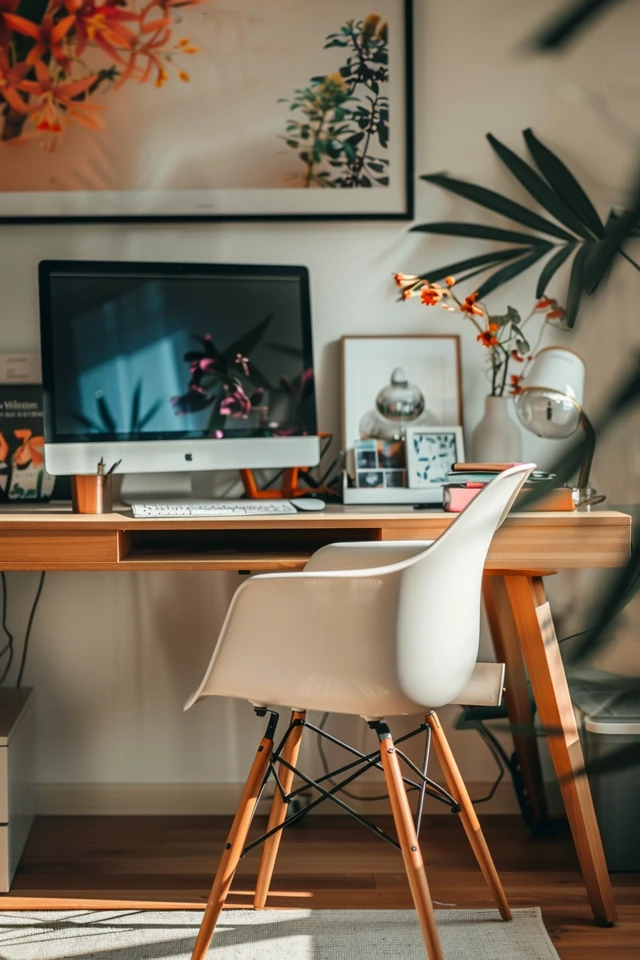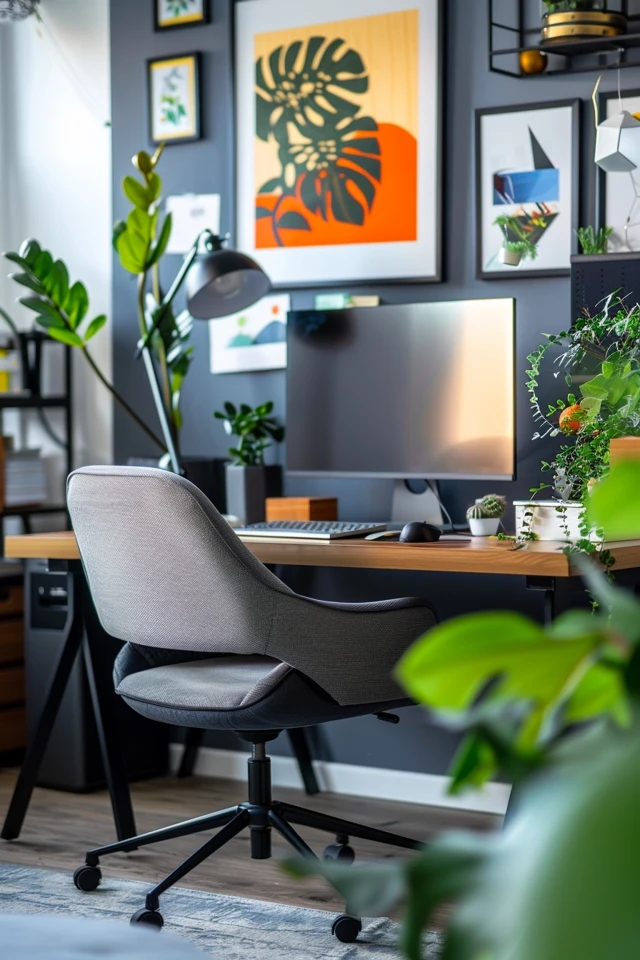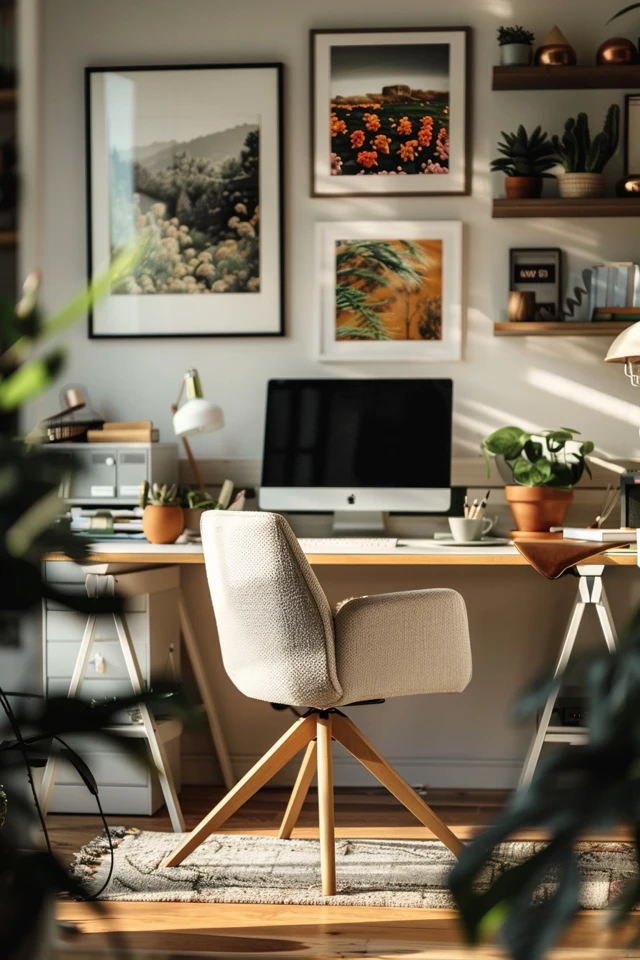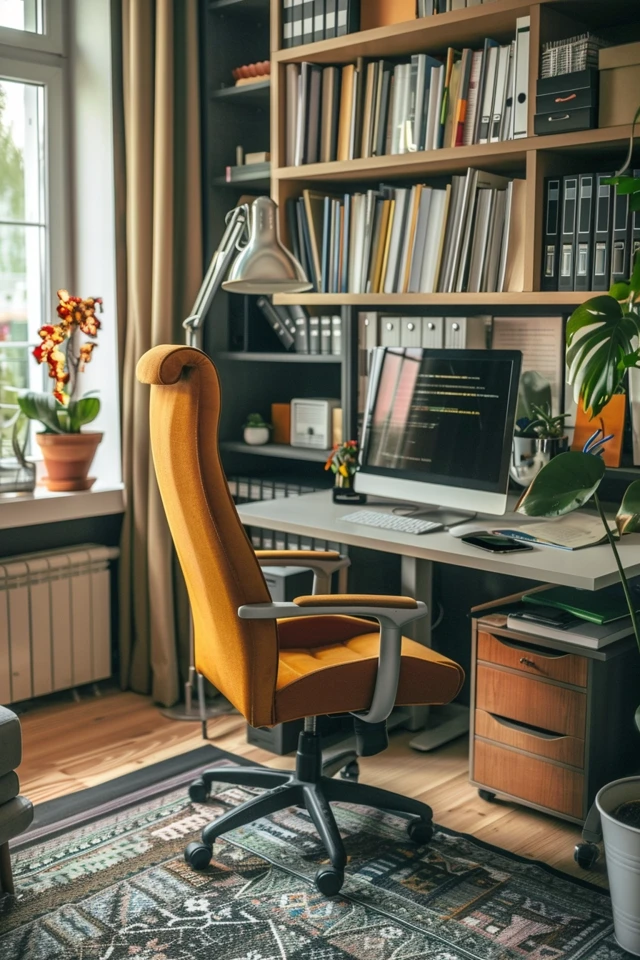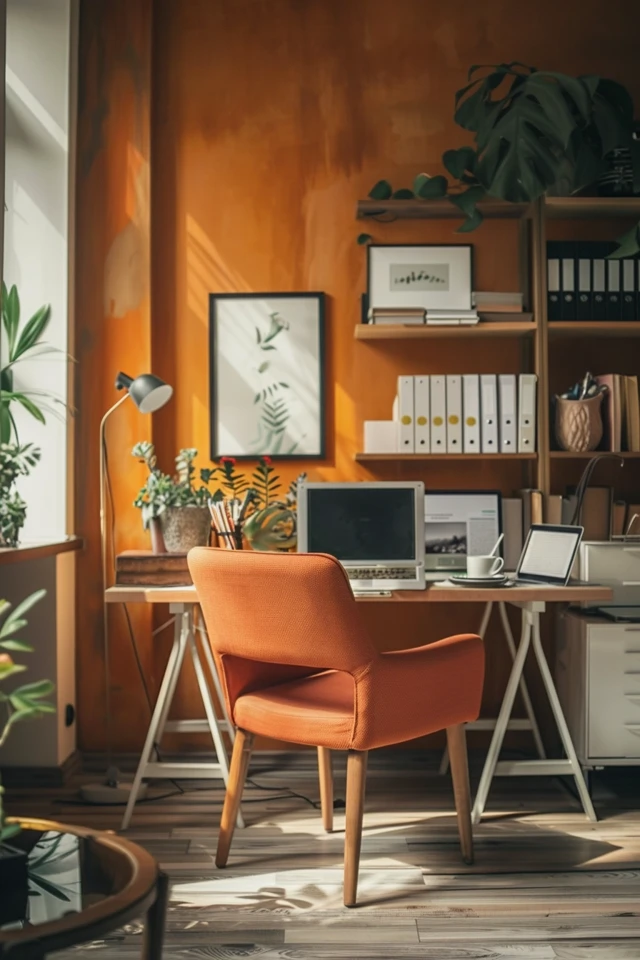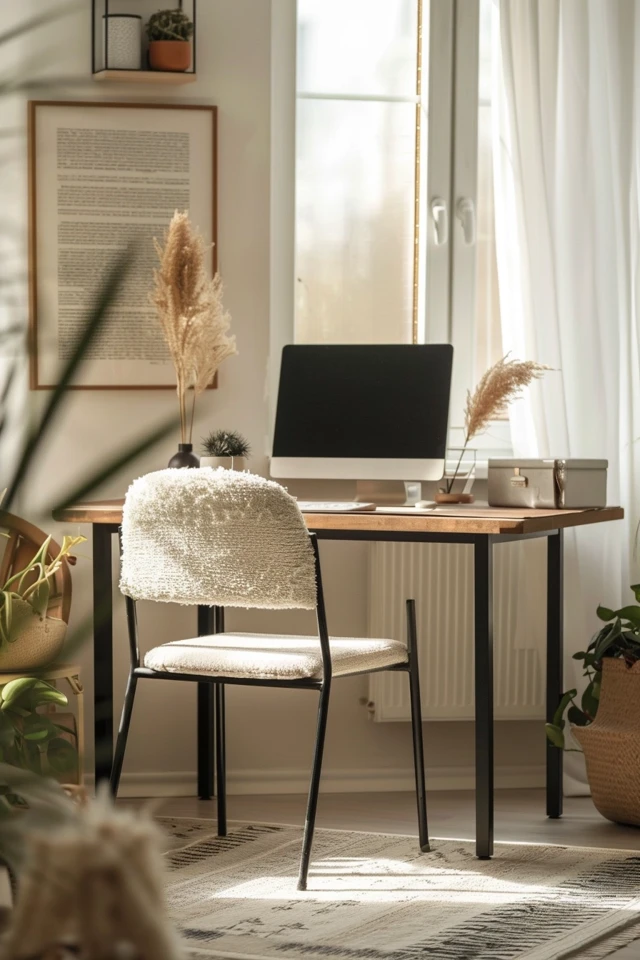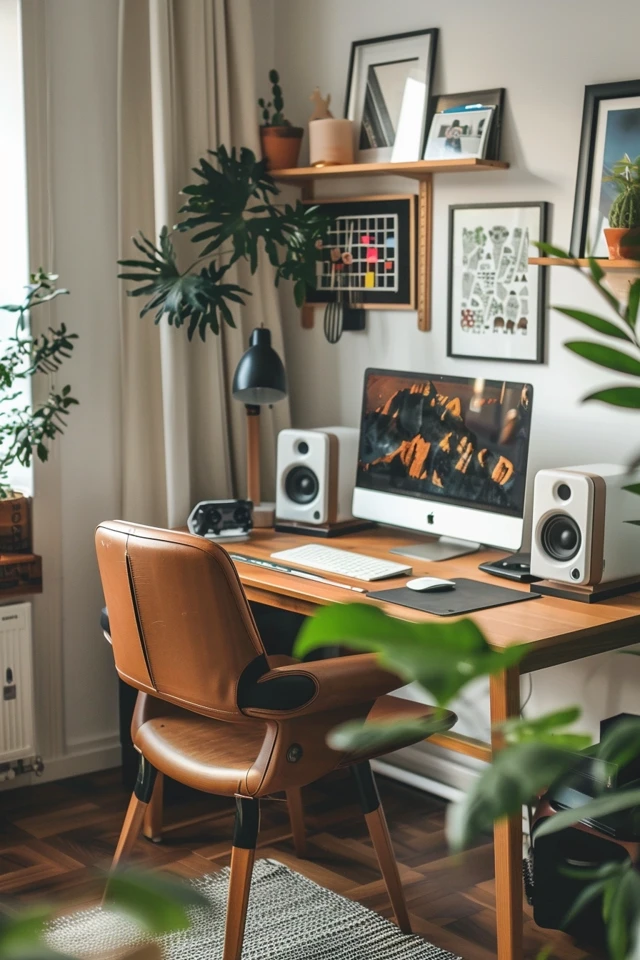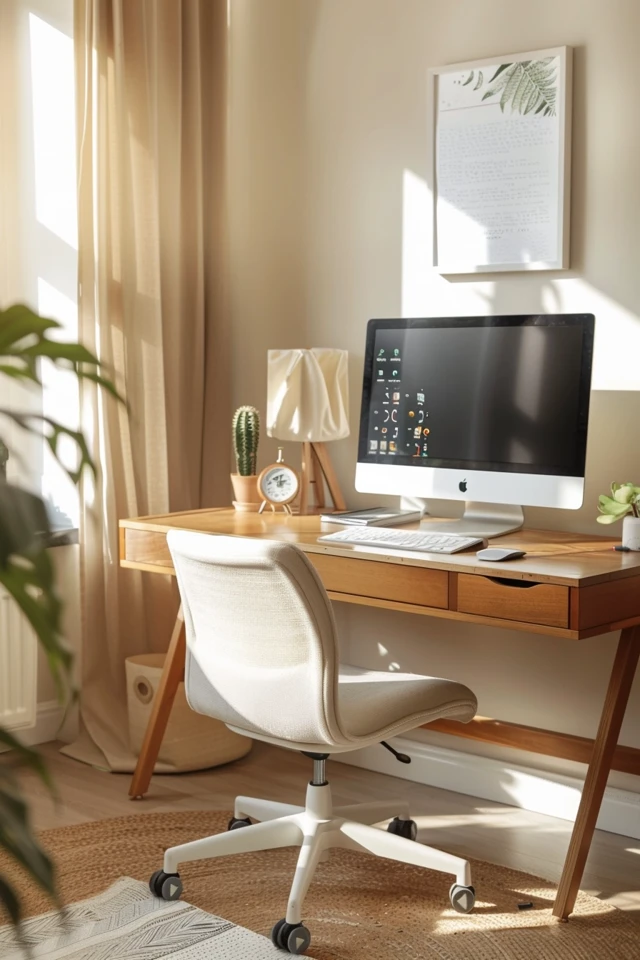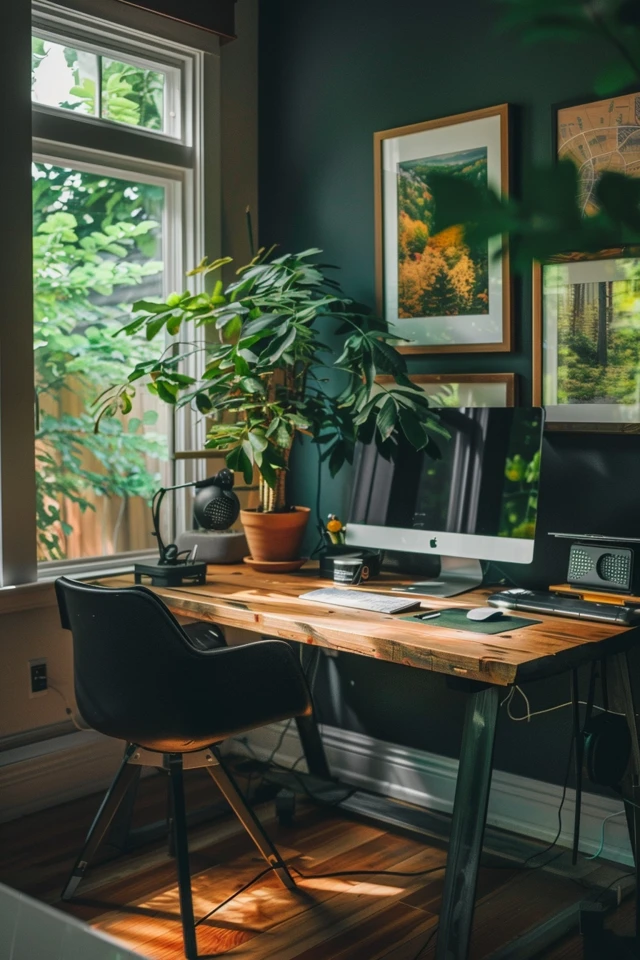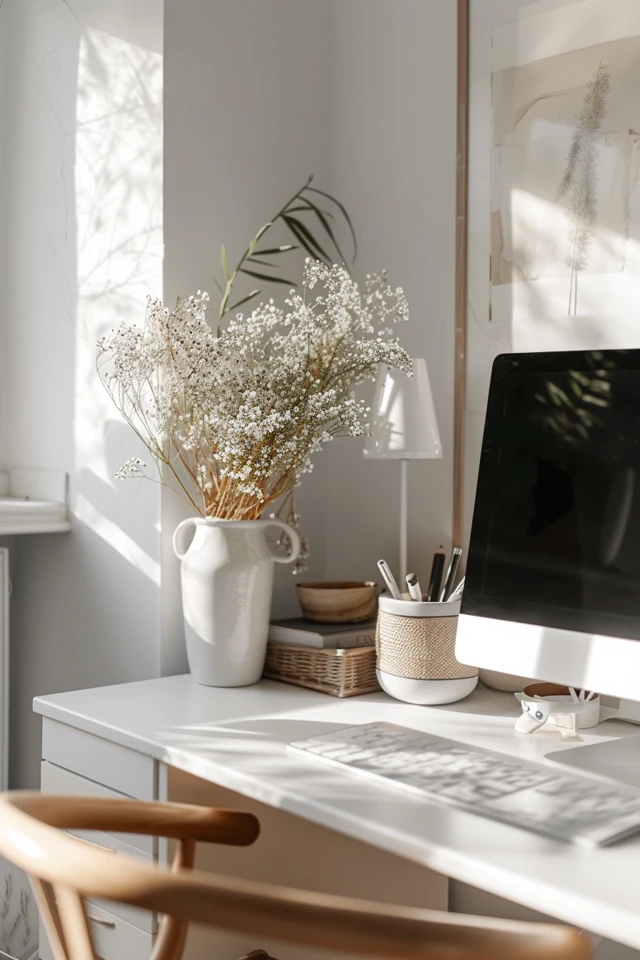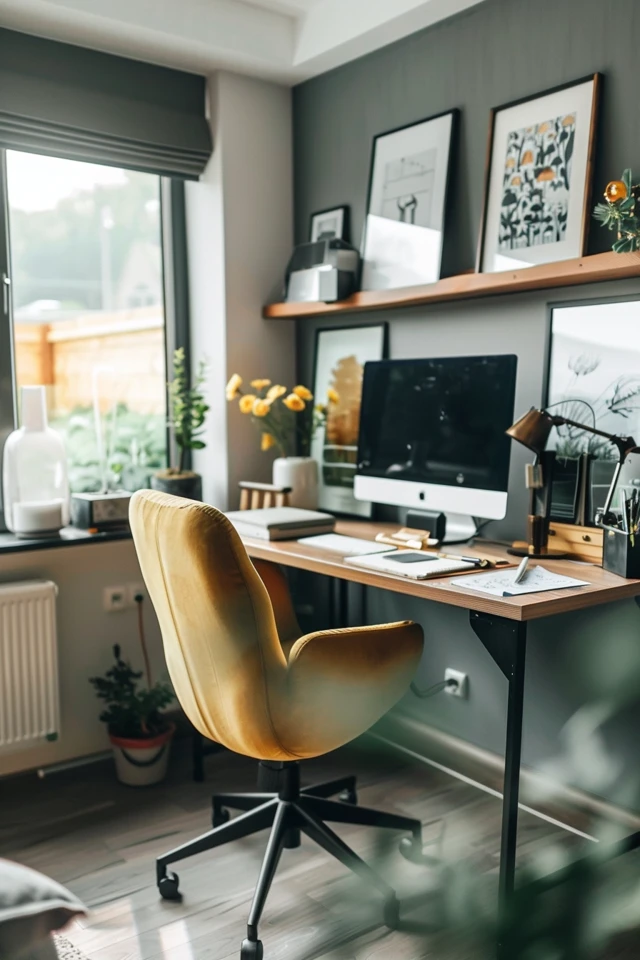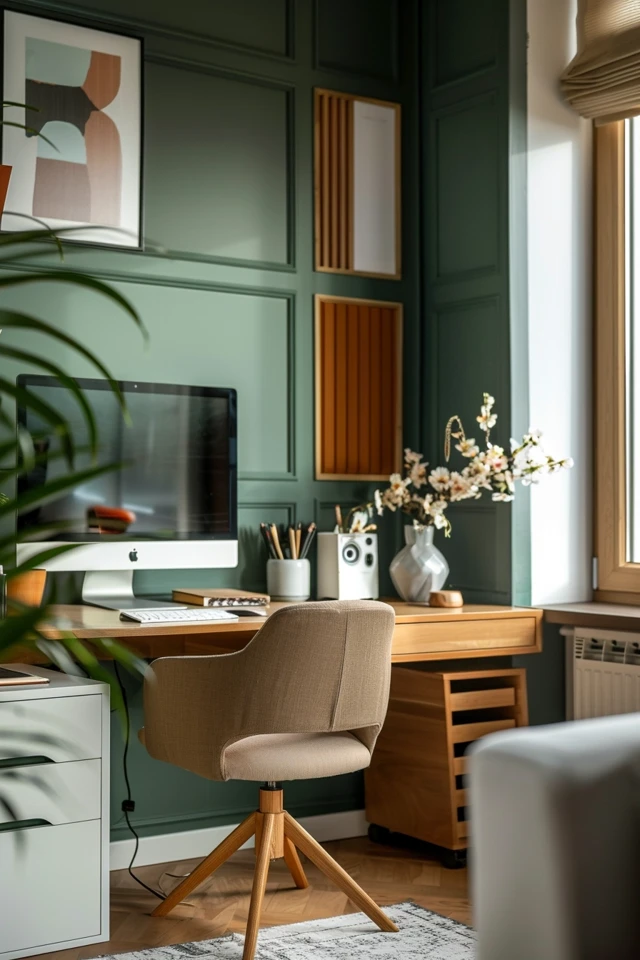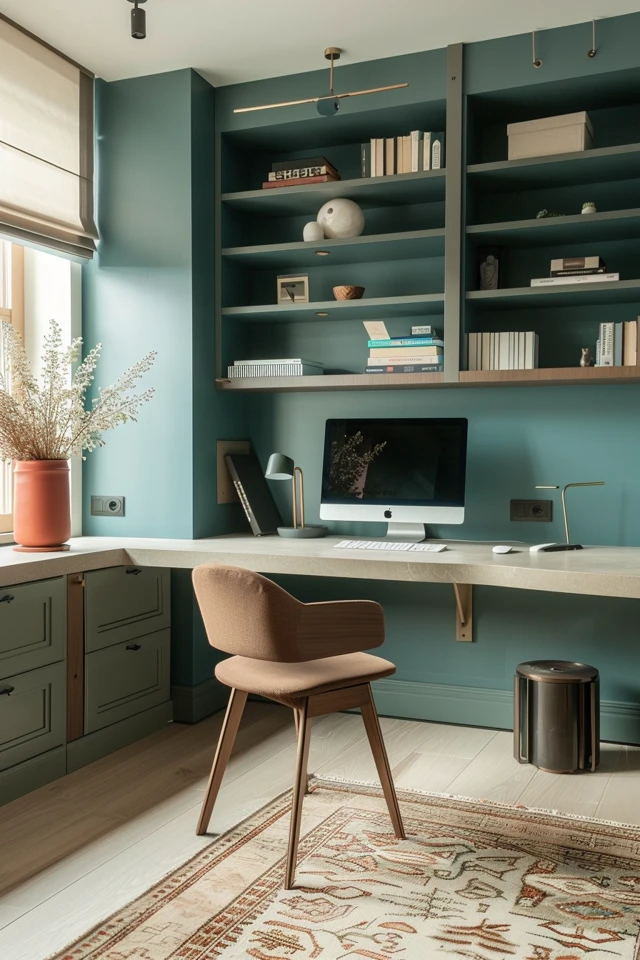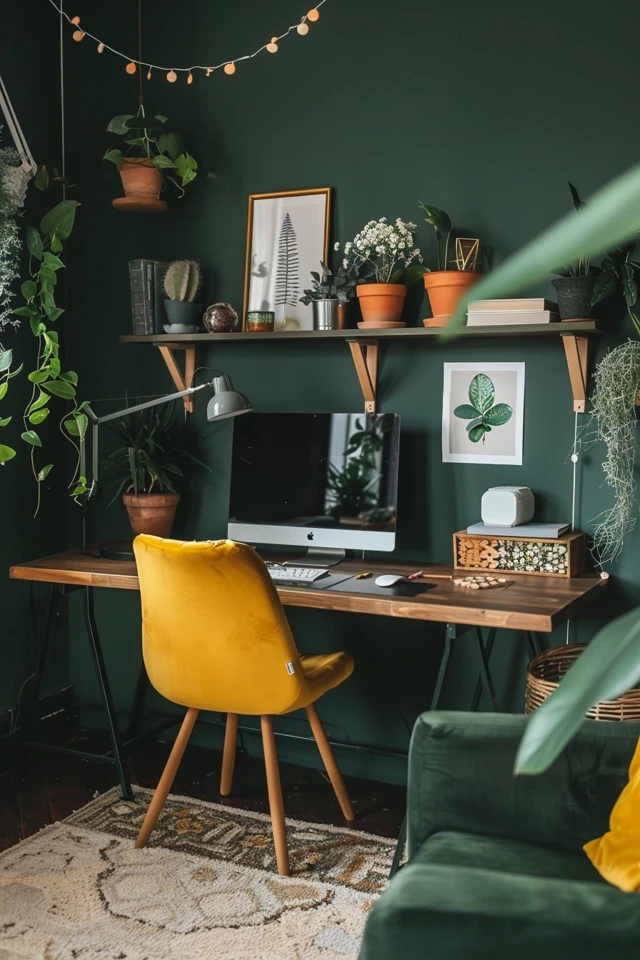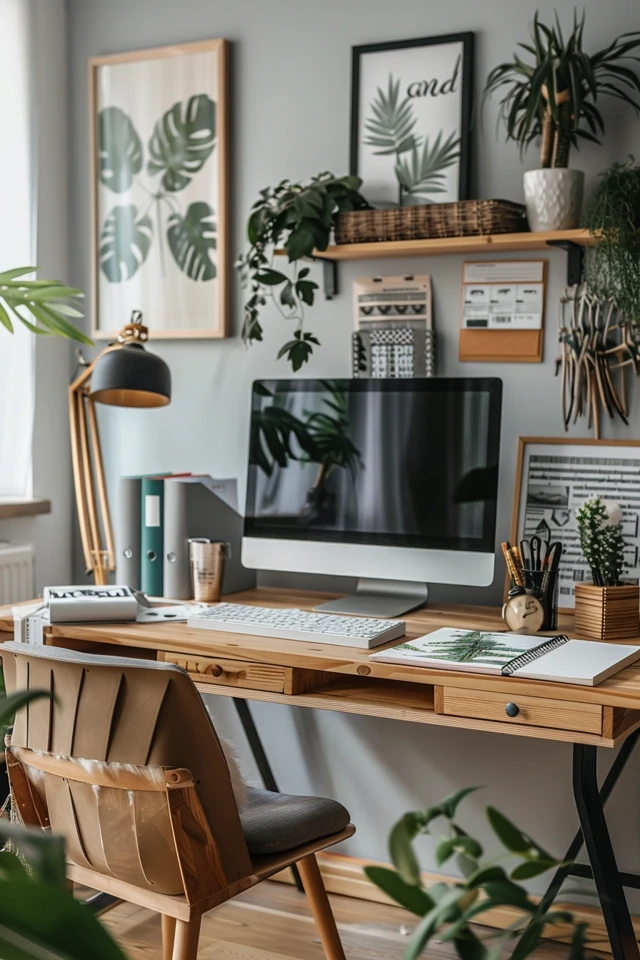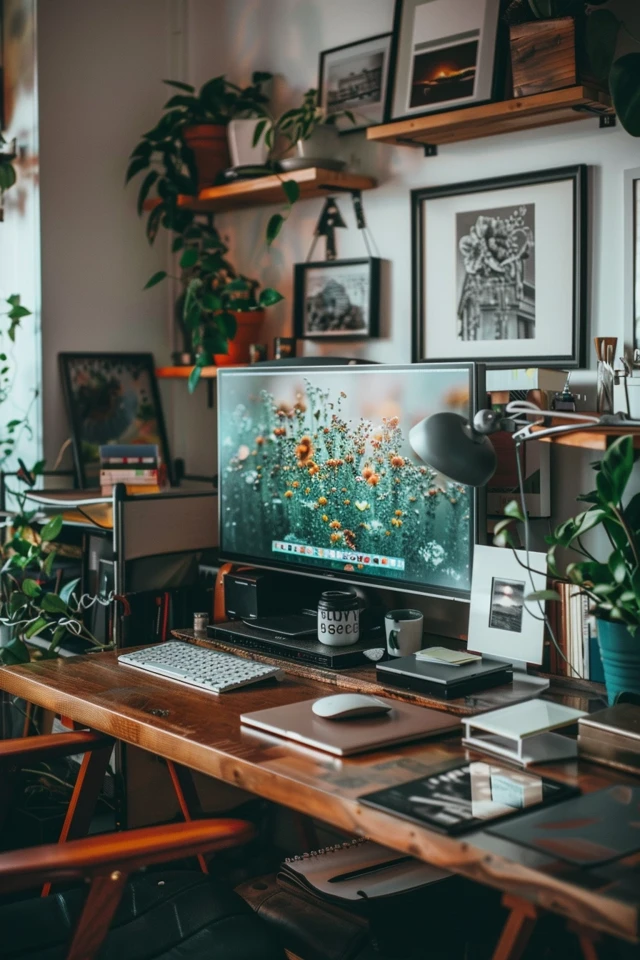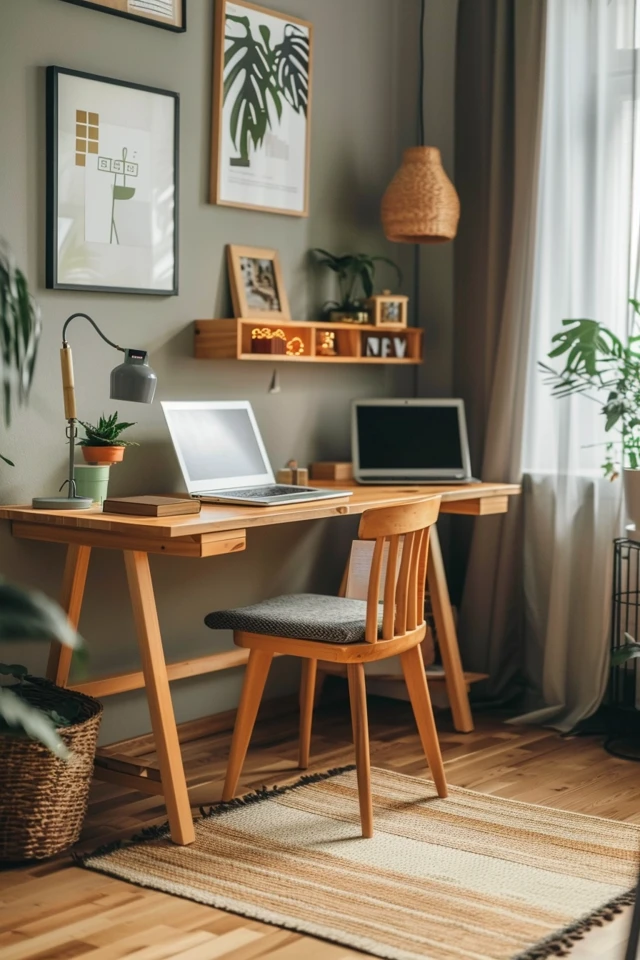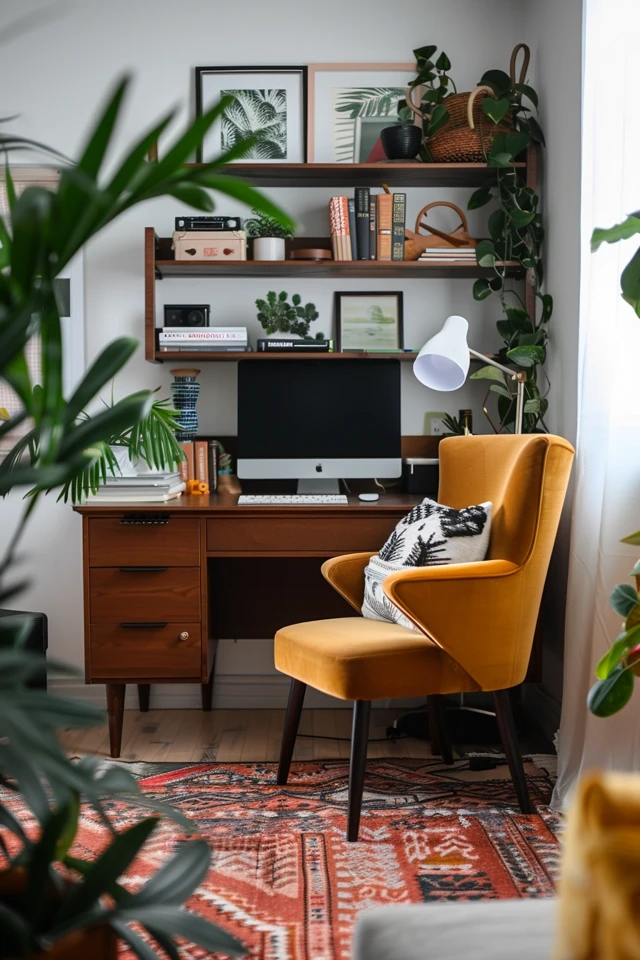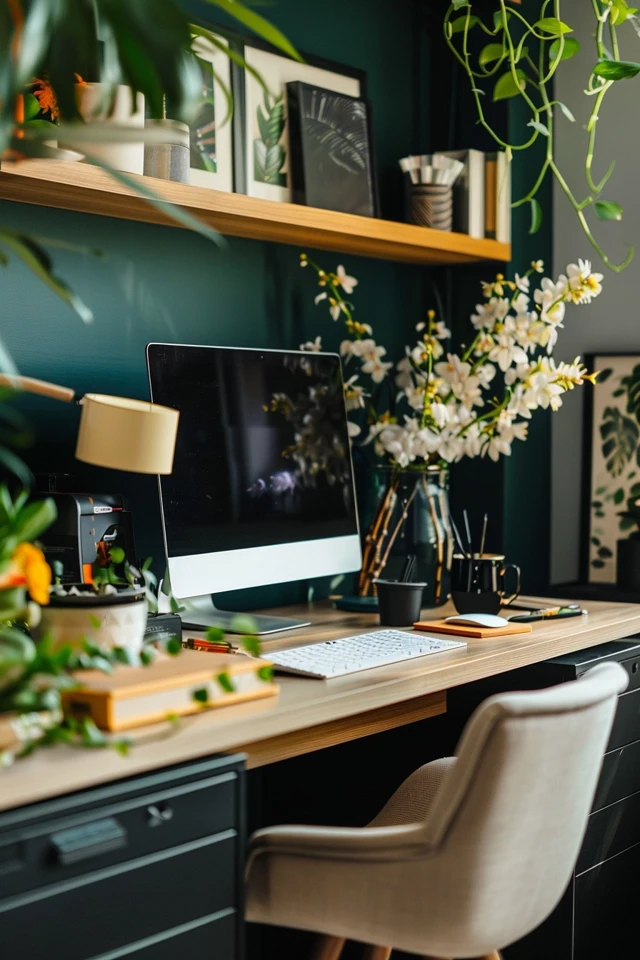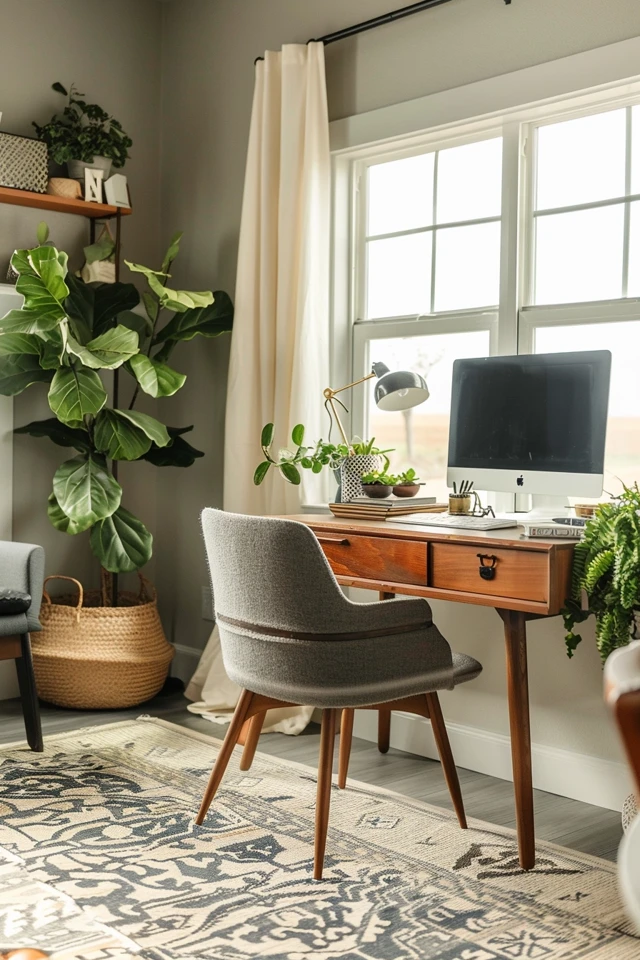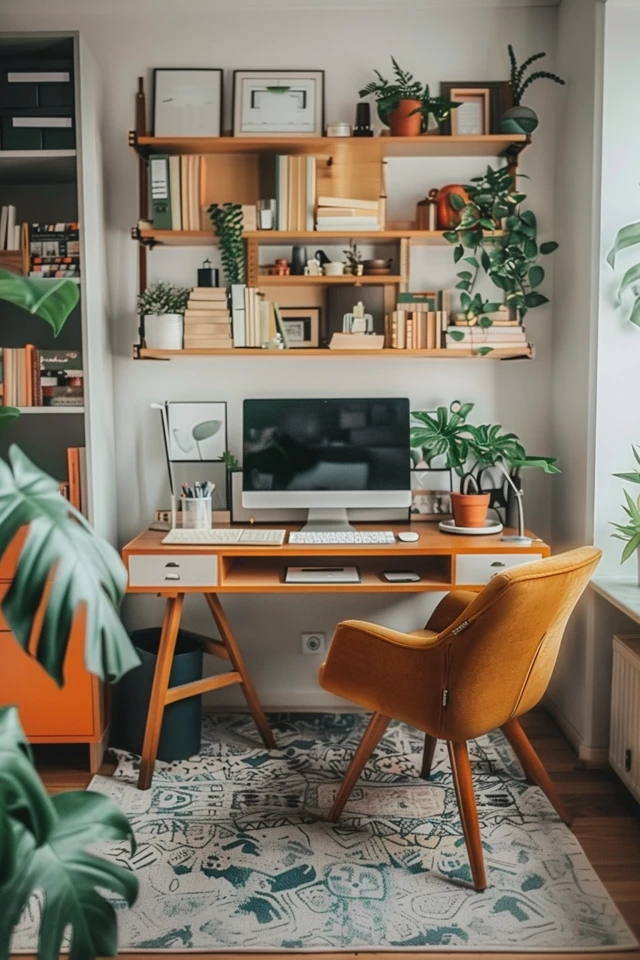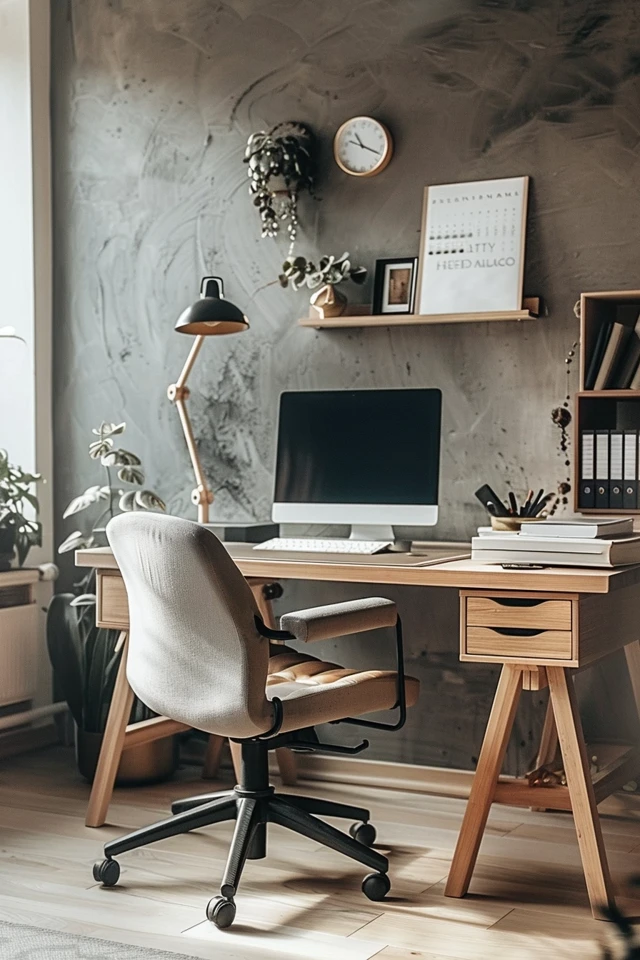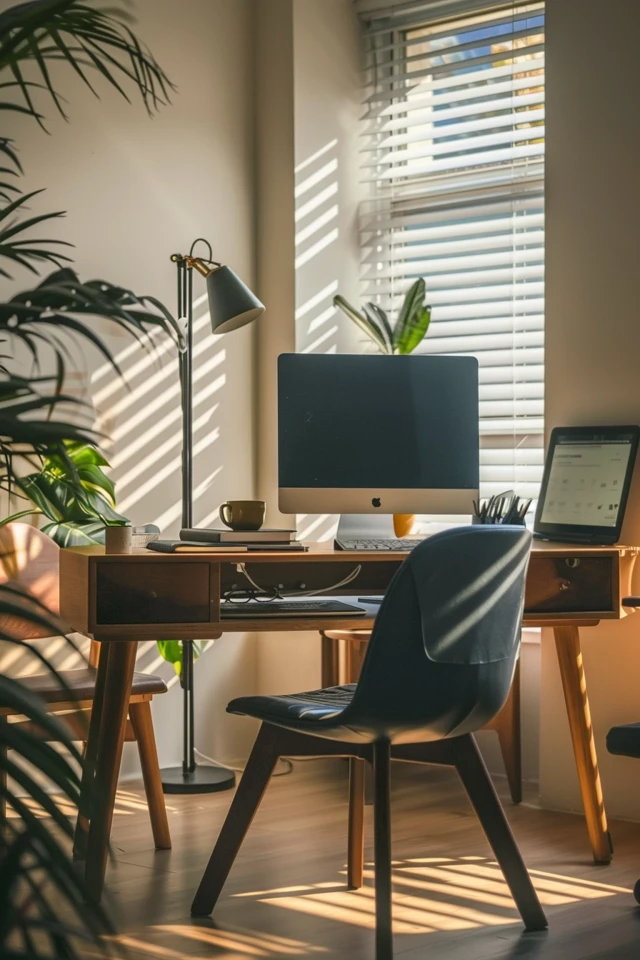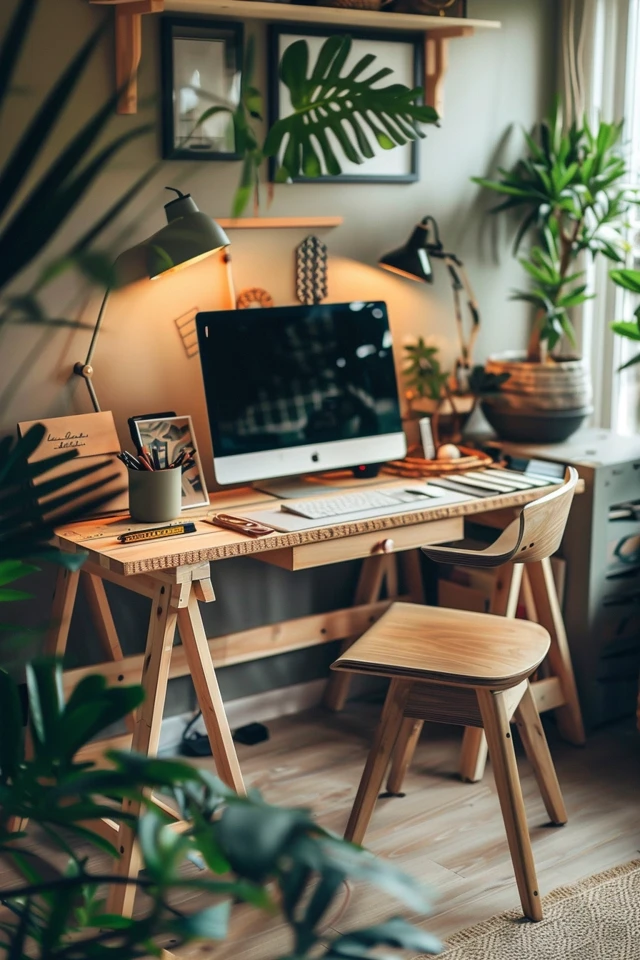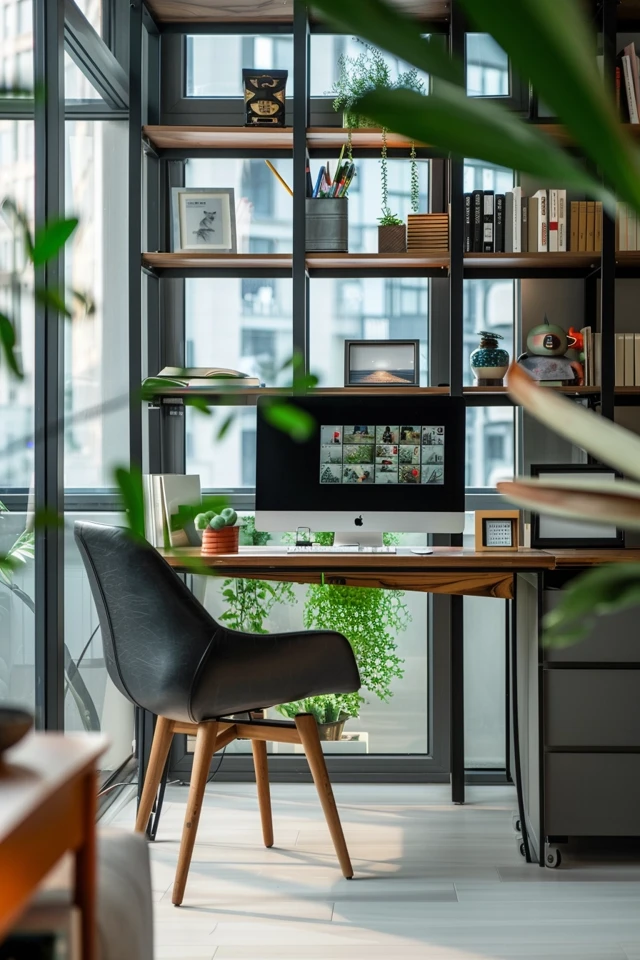Creating a productive home office is essential in today’s world where remote work and telecommuting are becoming the norm. As an architect and interior designer specializing in evidence-based design, I understand the importance of a well-designed workspace that enhances productivity and well-being. A functional and stylish home office can significantly improve your work experience and efficiency. In this article, we’ll explore key tips for creating an optimal home office setup.
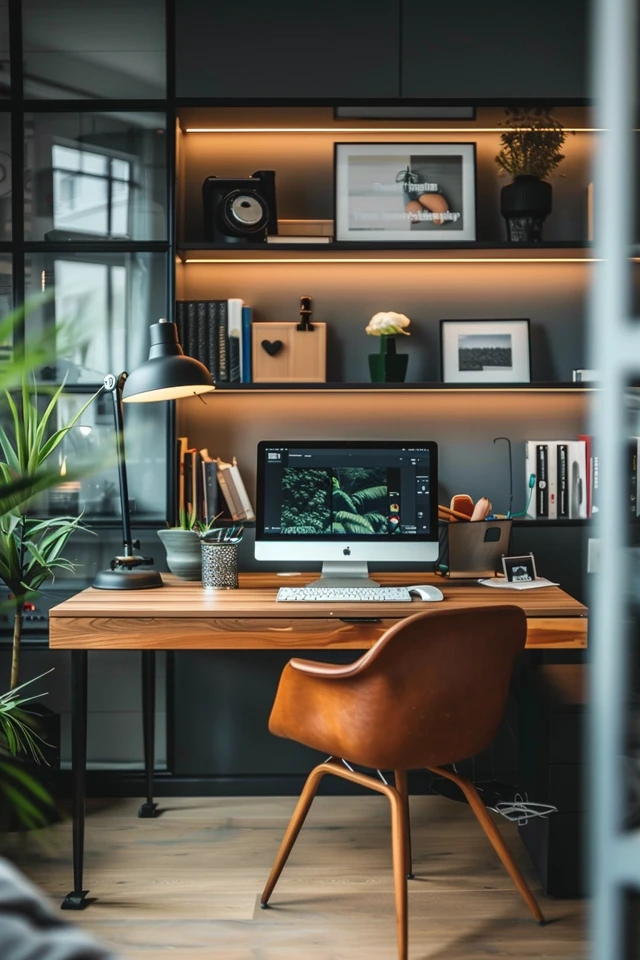
Key Takeaways:
- Choose ergonomic furniture to support long hours of work.
- Optimize natural and artificial lighting for a comfortable work environment.
- Incorporate efficient storage solutions to keep your workspace organized.
- Personalize your office to reflect your style and preferences.
- Minimize distractions to maintain focus and productivity.
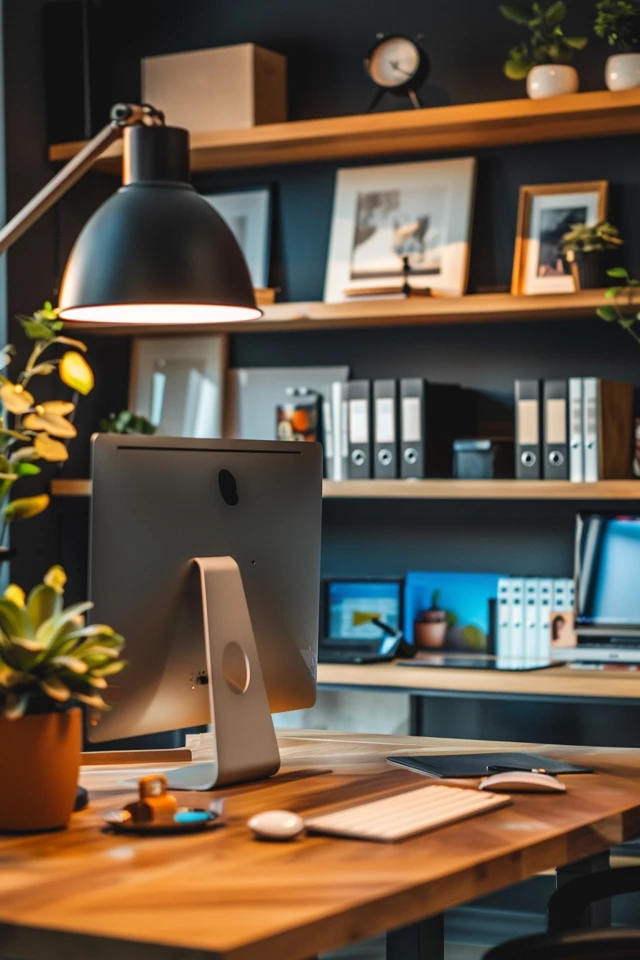
1. Choose Ergonomic Furniture
Investing in ergonomic furniture is crucial for your comfort and health, especially if you spend long hours at your desk. An ergonomic chair and desk can help prevent strain and injuries.
Key considerations:
- Ergonomic Chair: Choose a chair that supports your lower back and encourages good posture. Look for adjustable features such as seat height, armrests, and lumbar support.
- Standing Desk: A height-adjustable desk allows you to alternate between sitting and standing, which can reduce the risks associated with prolonged sitting.
- Desk Layout: Ensure that your desk is spacious enough to accommodate your computer, documents, and other essential items. Position your monitor at eye level to avoid neck strain.
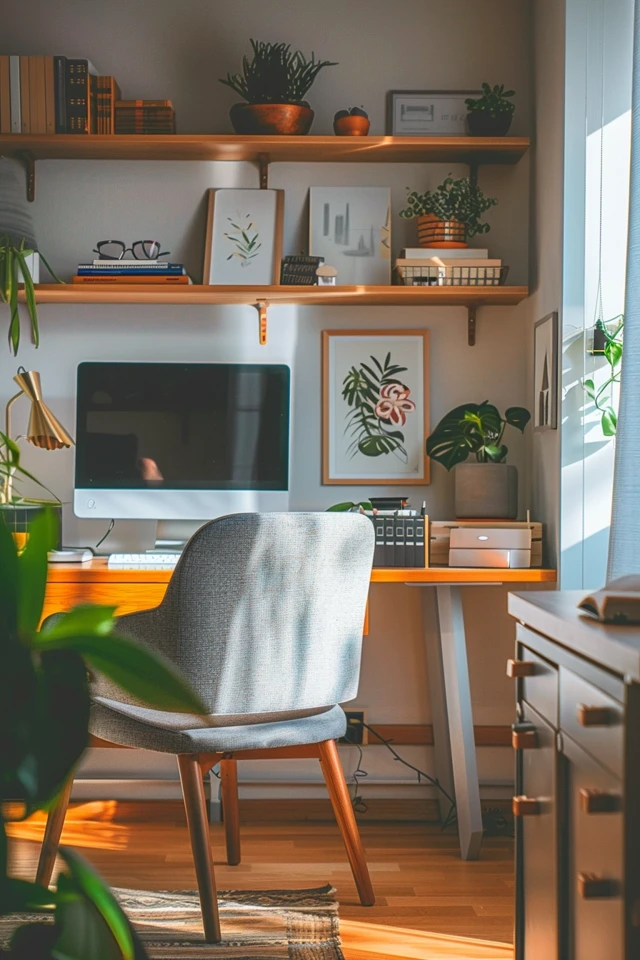
2. Optimize Natural and Artificial Lighting
Proper lighting is essential for creating a comfortable and productive workspace. A well-lit home office can reduce eye strain and improve focus.
Lighting strategies:
- Natural Light: Position your desk near a window to take advantage of natural light. Natural light can boost your mood and energy levels, making you more productive.
- Task Lighting: Use a desk lamp with adjustable brightness to provide focused light for reading and other detailed tasks. Choose a lamp with a flexible arm to direct light where you need it.
- Ambient Lighting: Ensure your home office has adequate ambient lighting to create a balanced and well-lit environment. Overhead lights or wall sconces can provide general illumination.
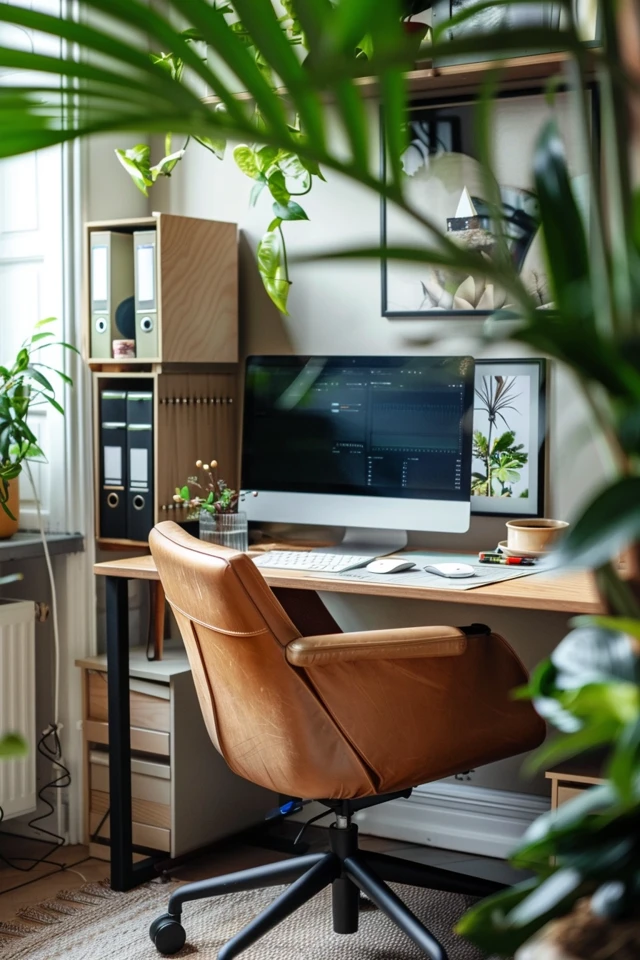
3. Incorporate Efficient Storage Solutions
An organized workspace can enhance productivity by reducing clutter and making it easier to find what you need. Incorporate efficient storage solutions to keep your home office tidy.
Storage tips:
- Shelving Units: Install shelves to store books, files, and decorative items. Floating shelves can save floor space and keep your office looking sleek.
- Filing Cabinets: Use filing cabinets to organize important documents and keep them within easy reach. Choose cabinets with locks for added security.
- Drawer Organizers: Utilize drawer organizers to keep office supplies like pens, paperclips, and sticky notes neatly arranged. This will help you maintain a clutter-free desk.
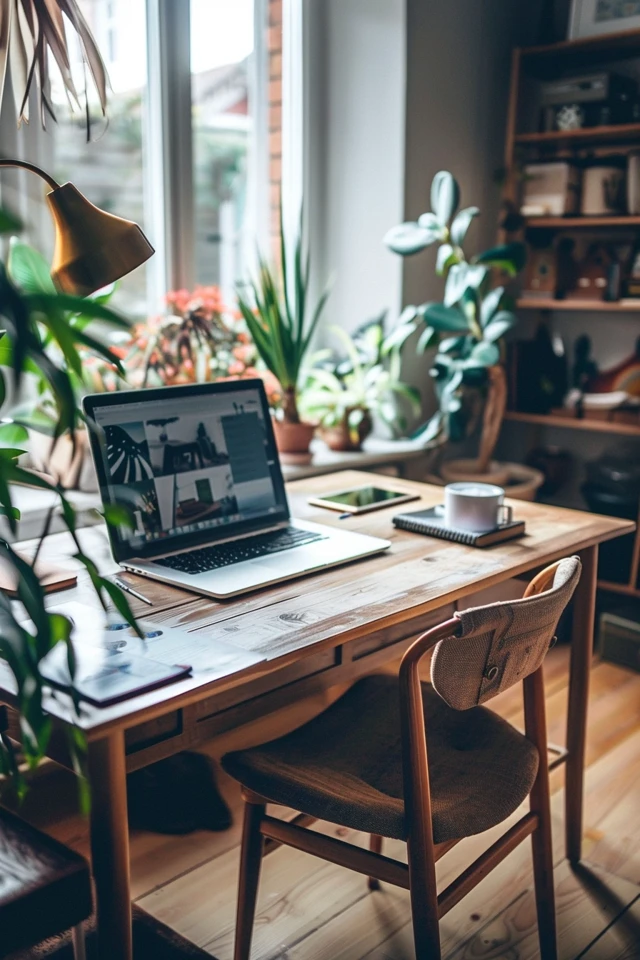
4. Personalize Your Office
Personalizing your home office can make it a more enjoyable and inspiring place to work. Add elements that reflect your style and preferences.
Personalization ideas:
- Artwork: Hang artwork or inspirational quotes that motivate you. A vision board can also help you stay focused on your goals.
- Plants: Incorporate plants to add a touch of nature to your workspace. Plants can improve air quality and create a calming atmosphere.
- Color Scheme: Choose a color scheme that boosts your mood and creativity. Soft blues and greens can create a calming environment, while bold colors like red or yellow can energize the space.
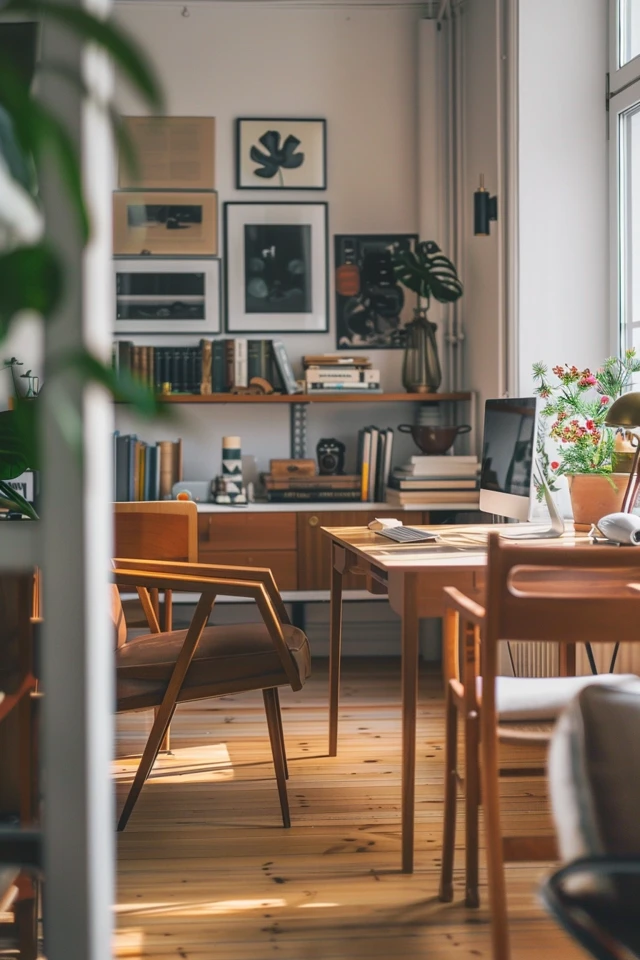
5. Minimize Distractions
A distraction-free environment is key to maintaining focus and productivity. Take steps to minimize interruptions and create a dedicated workspace.
Tips for minimizing distractions:
- Location: Choose a quiet area of your home for your office, away from high-traffic zones and household noise.
- Soundproofing: Consider adding soundproofing materials like rugs, curtains, or acoustic panels to reduce noise.
- Declutter: Keep your desk and office space free of unnecessary items. A clean and organized workspace can help you stay focused on your tasks.
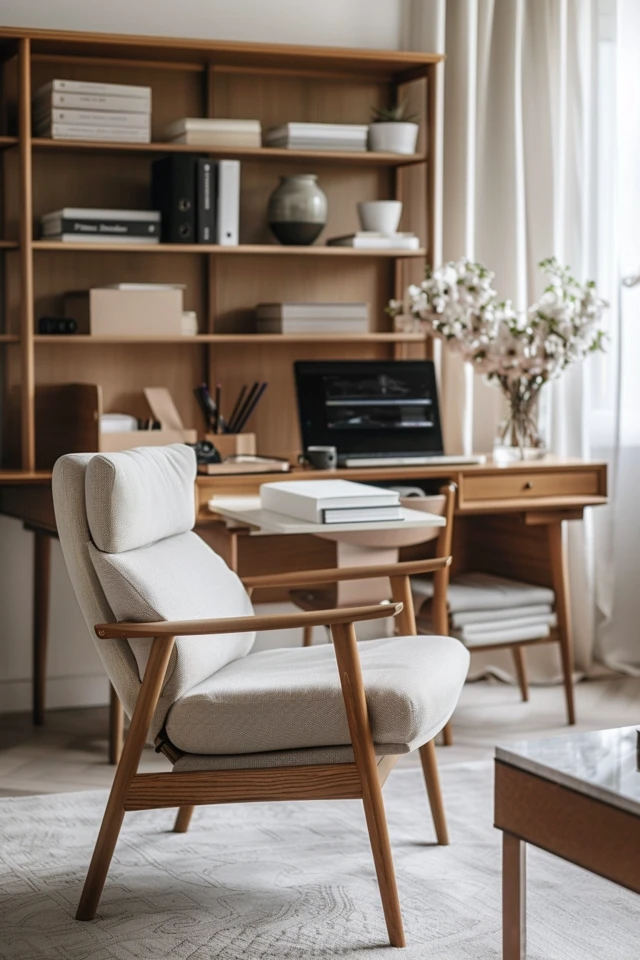
Conclusion
Designing a productive home office involves careful consideration of ergonomics, lighting, storage, personalization, and minimizing distractions. By choosing ergonomic furniture, optimizing natural and artificial lighting, incorporating efficient storage solutions, personalizing your office, and minimizing distractions, you can create a workspace that enhances your productivity and well-being.
As an architect and interior designer, I believe that a well-designed home office can significantly improve your work experience. A functional and stylish workspace can help you stay organized, focused, and motivated. Follow these tips to create a home office that meets your needs and reflects your personal style, ensuring a productive and enjoyable work environment.
Inspirational Pictures
